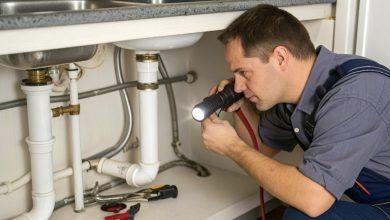
The Importance of a Roof Snow Removal Plan
While clearing snow from your roof may seem like a hassle, it is essential in preventing structural damage and other issues. A plan is critical to ensure the job is completed safely and efficiently.
Commercial facility managers should consider incorporating a roof snow removal plan into their overall maintenance program to reduce the risk of building damage, loss of productivity, leaks, and severe injury to workers.
Safety First
There are instances where DIY snow removal from a home roof is appropriate, but it is generally best to leave most snow removal to the professionals. The approach that pros take will avoid damage to the shingles, prevent the wear down of the bottom ice layer that can be problematic when it melts, and save your roof and yourself from personal injury.
Every roof is designed with a specific load limit, and the weight added by snow must be carefully considered. It can raise structural stresses that lead to leaks, building damage, and loss of productivity.
A roof snow removal plans for steep-slope roofs is also crucial. It should include skylight locations, trip hazards, ladder safety, pedestrian considerations, metal shovel damage, and worker exposure. This plan should be documented and readily available. In addition, a site map is recommended for those working on the roof to help with hazard assessments.
Clearing the Roof
Having snow on the roof of your building can add significant weight. One cubic foot of powdery snow weighs six to eight pounds, but packed or wet snow can add up to 20 pounds per square foot or more. This extra load stresses the roof, causing it to shift or collapse.
Snow can cause ice dams and icicles, damaging roofs and causing leaks. It’s best to remove snow early to prevent this.
Removing snow from a roof can be made easier with the help of a roof rake. However, wearing appropriate safety equipment and exercising caution when climbing up the roof is crucial. If you remove snow during or after a snowstorm, start at the eaves and work toward the ridges. It helps prevent unbalanced loading conditions. And remember that snow compacts and gets heavier as it sits, so it’s important to rake regularly. You should remove snow before it builds up to 12 inches.
Preventing Damage
Thousands of property insurance claims are filed every winter due to snow damage. While some of these claims are inevitable, many could be prevented by a proactive approach to roof snow removal and maintenance.
A snow removal plan should identify how the actual snow load will be measured, who will perform the removal and the sequence in which snow will be removed. The plan should also identify shut-off valves for the building’s utilities.
If a building owner is uncomfortable climbing the roof or needs the proper equipment to remove snow safely, they should consider calling in a professional. Not only is working on a snow-covered roof slippery and dangerous, but it increases the likelihood of accidental damage to the building structure. For example, metal shovels can damage the roof covering, and ice chips or picks can hook onto a shingle or flashing, creating additional problems. It is also important to note that some commercial roofing systems are not built to withstand excessive snow and can collapse under the weight.
Maintaining the Roof
Accumulated snow can cause buildings to deflect or collapse. It can lead to severe leaks, loss of product, and even, in some cases, death or injury to people inside the facility. Building codes require that roofs handle specific weight and snow loads. Increased loads can be caused by drifting snow, a buildup of old snow and ice, or additional weight like HVAC equipment, solar panels, or other structural elements added to the building since it was built.
Knowing how much the roof can handle and planning for snow removal regularly helps prevent structural damage. Wet snow is hefty and maybe twice as much as dry snow. Regularly raking the roof’s valleys (if possible, without damaging the shingles) will help prevent ice dams and cave-ins. Ideally, the plan should include methods to remove ice dams safely.



